Shedding Light on the Efficiency of Solar Panels
In recent years, the world has witnessed a remarkable shift towards renewable energy sources, with solar power leading the charge. But what exactly makes solar panels so efficient, and how can we maximize their potential? This article dives deep into the various aspects that influence solar panel efficiency, from the latest technological advancements to environmental factors and practical applications. By understanding these components, we can harness the sun's energy more effectively, paving the way for a sustainable future.
When it comes to solar panels, not all are created equal. The efficiency of solar panels largely depends on the type of technology used in their production. The three main types of solar panels are monocrystalline, polycrystalline, and thin-film. Each of these technologies has its own unique characteristics and efficiency levels:
| Type | Efficiency | Suitability |
|---|---|---|
| Monocrystalline | 15-22% | Residential and commercial installations with limited space |
| Polycrystalline | 13-16% | Large-scale installations where space is not a constraint |
| Thin-Film | 10-12% | Flexible applications and large areas |
Monocrystalline panels are known for their high efficiency and sleek appearance, making them a popular choice for homeowners looking to maximize energy output in a limited space. On the other hand, polycrystalline panels, while slightly less efficient, are often more affordable and suitable for larger installations. Thin-film technology, though less efficient, offers flexibility and lightweight options for various applications.
Several factors can significantly impact the efficiency of solar panels. Understanding these elements is crucial for optimizing energy output and overall performance. Let's explore some key factors:
Did you know that temperature can play a crucial role in solar panel efficiency? As the temperature rises, the energy production of solar panels can decrease. This phenomenon occurs because most solar panels operate best at cooler temperatures. When they get too hot, their ability to convert sunlight into electricity diminishes. Therefore, managing temperature is vital for maintaining optimal performance.
To combat the negative effects of heat, various cooling techniques can be implemented. These methods can enhance solar panel efficiency and ensure they operate at peak performance. Some of the popular cooling techniques include:
- Passive Cooling: Utilizing natural ventilation and shading to keep panels cool.
- Active Cooling Systems: Incorporating water or air cooling systems to actively lower panel temperatures.
By adopting these cooling strategies, solar panel owners can significantly boost their energy output, especially in hotter climates.
Another exciting aspect of solar panel efficiency lies in material innovations. Recent advancements in materials and coatings have been designed to enhance light absorption and energy conversion. For instance, researchers are developing new types of photovoltaic cells that utilize perovskite materials, which have shown great potential in improving efficiency rates. These innovations are paving the way for more efficient and cost-effective solar solutions.
The positioning of solar panels is just as critical as the technology used. Shading from nearby trees, buildings, or other obstructions can drastically reduce energy generation. Additionally, the angle at which panels are installed affects their exposure to sunlight. Ideally, solar panels should be oriented towards the sun to maximize their energy output throughout the day. Proper planning and installation can make all the difference in harnessing solar energy effectively.
Solar panels are not just a trend; they are becoming a staple in various sectors, including residential, commercial, and industrial applications. Their versatility and efficiency offer significant benefits in energy consumption and cost savings.
Homeowners are increasingly turning to solar panel installations to reduce their energy bills and embrace sustainable living. With financial incentives such as tax credits and rebates, the initial investment in solar technology can pay off in the long run. Moreover, solar energy provides energy independence, allowing homeowners to generate their own power and reduce reliance on traditional energy sources. The environmental benefits are also substantial, contributing to a reduction in greenhouse gas emissions.
Businesses are catching on to the advantages of solar technology as well. Many companies are adopting solar panels to cut down on operational costs and minimize their carbon footprints. Case studies show that commercial solar installations can lead to significant savings and a positive impact on the environment. By investing in solar energy, businesses not only save money but also enhance their brand image as environmentally responsible entities.
Q: How long do solar panels last?
A: Most solar panels have a lifespan of 25-30 years, with many still producing electricity beyond that time frame.
Q: Can solar panels work in cloudy weather?
A: Yes! Solar panels can still generate electricity on cloudy days, although their efficiency may be reduced compared to sunny days.
Q: What maintenance do solar panels require?
A: Solar panels generally require minimal maintenance, but it's a good idea to keep them clean and inspect them regularly for any damage.
Q: Is it worth investing in solar panels?
A: Yes, investing in solar panels can lead to long-term savings on energy bills and contribute to a more sustainable future.
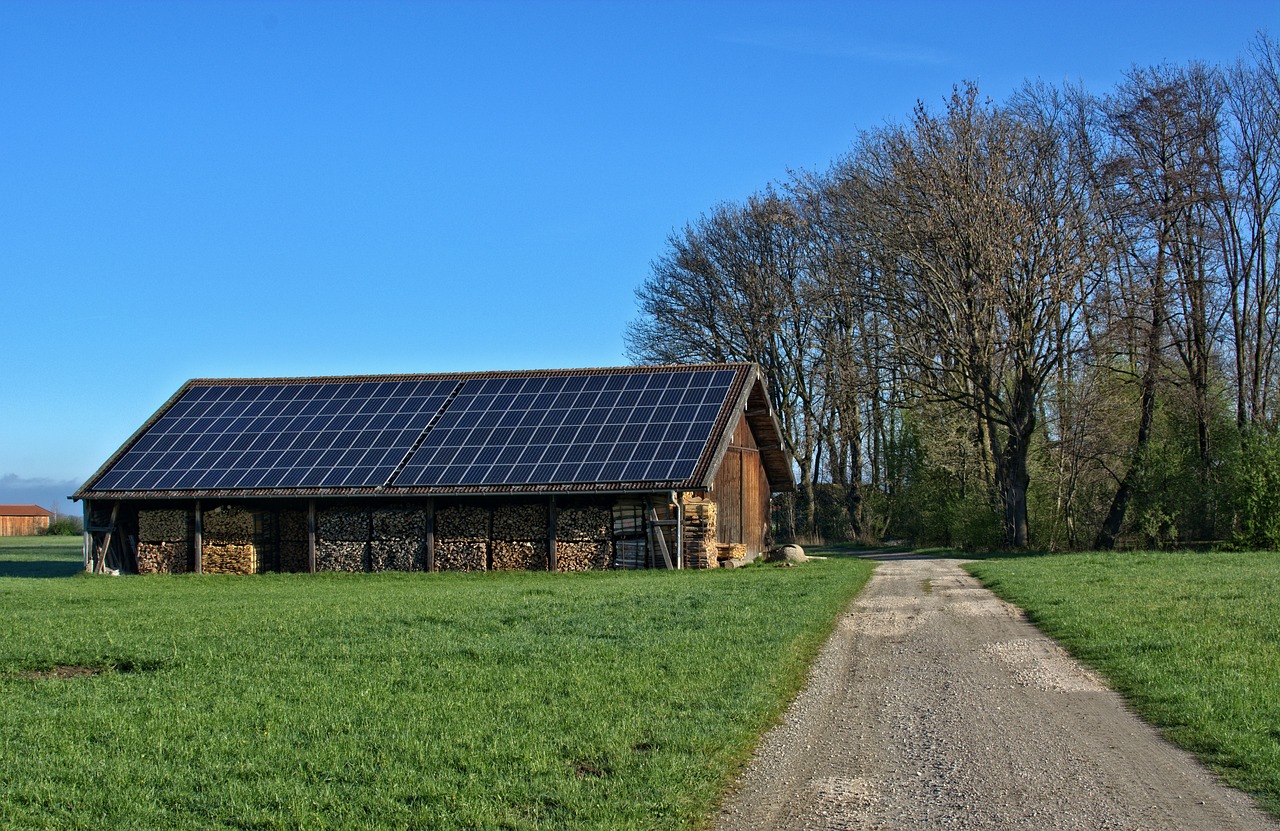
Understanding Solar Panel Technology
The world of solar panels is as vibrant and diverse as a garden in full bloom. At its core, solar panel technology revolves around converting sunlight into electricity, but not all panels are created equal. There are primarily three types of solar panels that dominate the market today: monocrystalline, polycrystalline, and thin-film. Each type has its unique characteristics, efficiency levels, and suitability for different applications, making it essential for consumers to understand these distinctions when considering solar energy solutions.
Monocrystalline solar panels are often considered the gold standard in solar technology. Made from a single crystal structure, they boast a high efficiency rate, often exceeding 20%. This means they can produce more power in a smaller space, making them ideal for homeowners with limited roof space. Their sleek black appearance is not just for aesthetics; it also indicates a higher purity of silicon, which contributes to their superior performance. However, this premium efficiency comes at a higher price point, which can be a deterrent for some.
On the other hand, polycrystalline solar panels are like the friendly neighbor who offers good value without breaking the bank. These panels are made from multiple silicon crystals, resulting in a slightly lower efficiency rate, typically between 15% to 20%. While they might take up more space to produce the same amount of electricity as monocrystalline panels, they are often more affordable, making them a popular choice for homeowners and businesses looking to make a budget-friendly investment in solar energy.
Then we have thin-film solar panels, which are the underdogs of the solar world. They are lightweight and flexible, making them suitable for a variety of applications, including unconventional surfaces like curved roofs or portable solar devices. However, their efficiency is generally lower, ranging from 10% to 12%, which means they require more space to generate the same amount of power as their crystalline counterparts. Despite this, their lower manufacturing costs and versatility make them an attractive option for specific use cases, particularly in large-scale installations where space is not a constraint.
When choosing a solar panel, it's crucial to consider not just the efficiency but also the application and environmental conditions. For instance, areas with limited space may benefit more from monocrystalline panels, while larger installations might opt for polycrystalline or thin-film options. Additionally, advancements in technology continue to emerge, leading to innovations in solar panel materials and designs that promise to enhance efficiency and reduce costs.
| Type of Solar Panel | Efficiency Rate | Cost | Best Use Cases |
|---|---|---|---|
| Monocrystalline | 20%+ | High | Limited space, residential rooftops |
| Polycrystalline | 15% - 20% | Moderate | Budget-friendly residential and commercial applications |
| Thin-Film | 10% - 12% | Low | Large-scale installations, flexible applications |
In summary, understanding solar panel technology is crucial for anyone looking to harness the power of the sun. Whether you’re a homeowner eager to reduce your energy bills or a business looking to go green, knowing the differences between monocrystalline, polycrystalline, and thin-film solar panels can help you make an informed decision that aligns with your needs and goals. The solar energy landscape is evolving rapidly, and keeping up with these changes will ensure you maximize your investment in renewable energy.
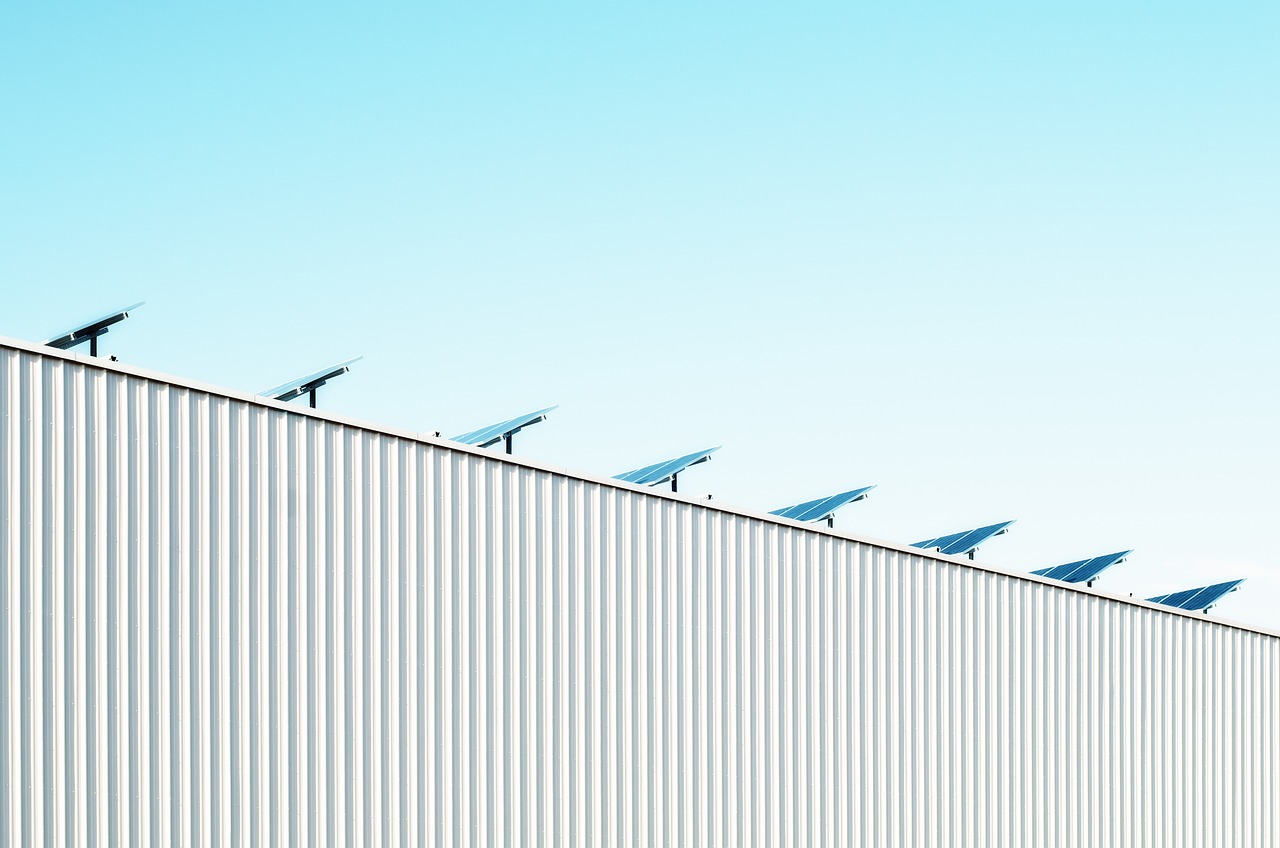
Factors Affecting Solar Panel Efficiency
When it comes to harnessing the power of the sun, understanding the factors that affect solar panel efficiency is crucial. While solar panels are a fantastic way to generate renewable energy, their effectiveness can be influenced by several elements. These include temperature, shading, and orientation. Each of these factors plays a significant role in how much energy your solar panels can produce, and knowing how to manage them can lead to better performance and higher energy output.
Temperature is one of the most significant factors impacting solar panel efficiency. You might think that more heat would mean more energy, but the truth is quite the opposite. As the temperature rises, the efficiency of solar panels tends to decrease. This happens because higher temperatures can lead to increased resistance in the solar cells, which ultimately reduces their ability to convert sunlight into electricity.
For instance, a solar panel that operates at 25°C might have an efficiency rating of 20%. However, when the temperature climbs to 45°C, that efficiency could drop by as much as 10%. This is why managing temperature is essential for optimal performance. Homeowners and businesses alike need to consider this when installing solar panels, as it can significantly affect energy production.
To counteract the detrimental effects of heat, several cooling techniques can be employed. For example, passive cooling methods involve designing the installation to promote airflow around the panels, thereby reducing heat buildup. On the other hand, active cooling systems, such as water cooling or fan-assisted cooling, can be implemented to actively reduce the temperature of the panels. By keeping solar panels cooler, you can enhance their efficiency and maximize energy output.
Another critical aspect of solar panel efficiency lies in the materials used. Recent advancements in solar technology materials have led to the development of new coatings and cell designs that enhance light absorption and energy conversion rates. For example, bifacial solar panels can capture sunlight from both sides, significantly boosting their efficiency. Innovations like these are paving the way for more effective solar solutions, making it essential for consumers to stay informed about the latest technologies.
The positioning of solar panels is also vital for maximizing exposure to sunlight. Shading from nearby trees, buildings, or even dirt and debris can drastically reduce energy generation. When solar panels are partially shaded, they can experience a phenomenon known as “hot spots,” which can damage the panels over time. Therefore, ensuring that your panels are installed in a location with minimal shading is crucial for maintaining their efficiency.
Moreover, the orientation and angle at which solar panels are installed can greatly influence how much sunlight they receive throughout the day. Ideally, solar panels should face south in the Northern Hemisphere and north in the Southern Hemisphere to capture the most sunlight. The tilt angle should also be adjusted according to your geographical location to optimize energy production. For example, a steeper angle may be more effective in winter when the sun is lower in the sky, while a flatter angle may work better in summer.
In summary, understanding these factors affecting solar panel efficiency can empower you to make informed decisions about your solar energy system. By managing temperature, utilizing innovative materials, and ensuring proper placement and orientation, you can significantly enhance the performance of your solar panels and make the most out of this sustainable energy source.
- What is the ideal temperature for solar panels? Most solar panels operate best at temperatures between 15°C and 25°C.
- How does shading impact solar panel efficiency? Shading can significantly decrease energy production and create hot spots that may damage the panels.
- What are bifacial solar panels? Bifacial solar panels can capture sunlight from both sides, enhancing their overall efficiency.
- How can I improve the efficiency of my solar panels? You can improve efficiency by keeping them clean, optimizing their orientation and tilt, and employing cooling techniques.
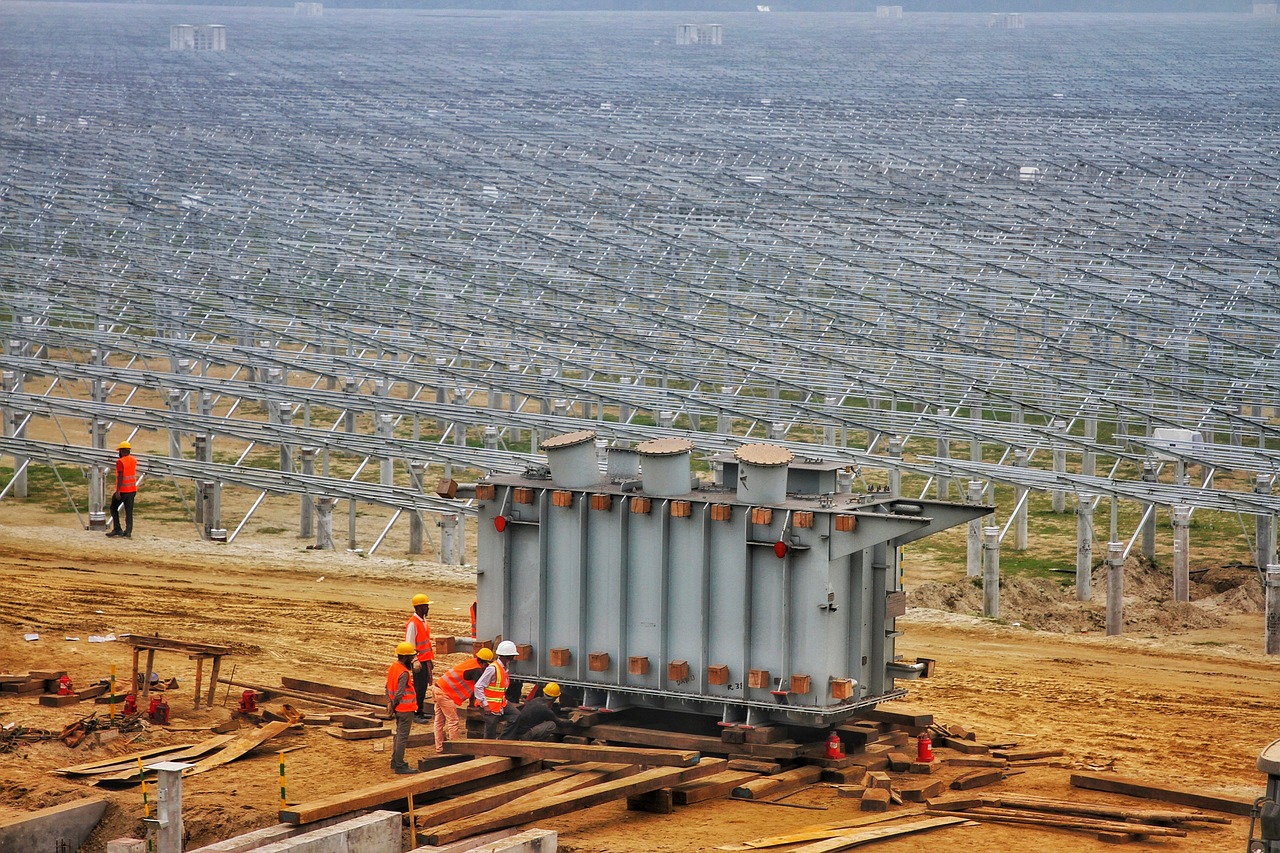
Temperature Effects
When it comes to solar panel efficiency, one of the most significant factors to consider is temperature. You might be surprised to learn that while solar panels are designed to harness the sun's energy, they actually perform best at cooler temperatures. That's right! As temperatures rise, the efficiency of solar panels can drop, leading to a decrease in energy production. This phenomenon is primarily due to the physics of semiconductor materials used in solar cells, which can lose their effectiveness as they heat up. In fact, for every degree Celsius increase in temperature, a typical solar panel can lose about 0.5% of its efficiency. So, if you think about it, a solar panel operating at a scorching 40°C could be producing significantly less energy than one at a cooler 25°C.
To illustrate this further, let's take a look at a
| Temperature (°C) | Efficiency (%) |
|---|---|
| 25 | 100 |
| 30 | 99.5 |
| 35 | 99.0 |
| 40 | 98.5 |
As you can see, even a small increase in temperature can lead to a noticeable drop in efficiency. This is why managing the temperature of solar panels is crucial for anyone looking to maximize their energy output. But how do we keep those panels cool? Well, there are a couple of effective strategies that can help.
One popular method is passive cooling, which involves designing the installation to take advantage of natural airflow and shading. For example, elevating the panels above the roof surface can allow air to circulate underneath, effectively cooling them down. On the other hand, active cooling systems can also be employed, which use fans or liquid cooling systems to lower the temperature of the panels actively. While these systems can be more expensive, they can significantly enhance energy output in high-temperature environments.
Additionally, advancements in materials are playing a pivotal role in improving solar panel efficiency under heat stress. Researchers are developing new materials and coatings that not only enhance light absorption but also help manage heat better. This means that the future of solar technology could very well include panels that are less affected by temperature variations, making them more efficient in a wider range of climates.
In conclusion, temperature is a critical factor that can drastically affect solar panel efficiency. By understanding the relationship between temperature and energy output, and by implementing effective cooling techniques and innovations in materials, we can ensure that solar panels operate at their best, even on the hottest days. So, the next time you think about solar energy, remember that keeping those panels cool is just as important as the sunlight they capture!
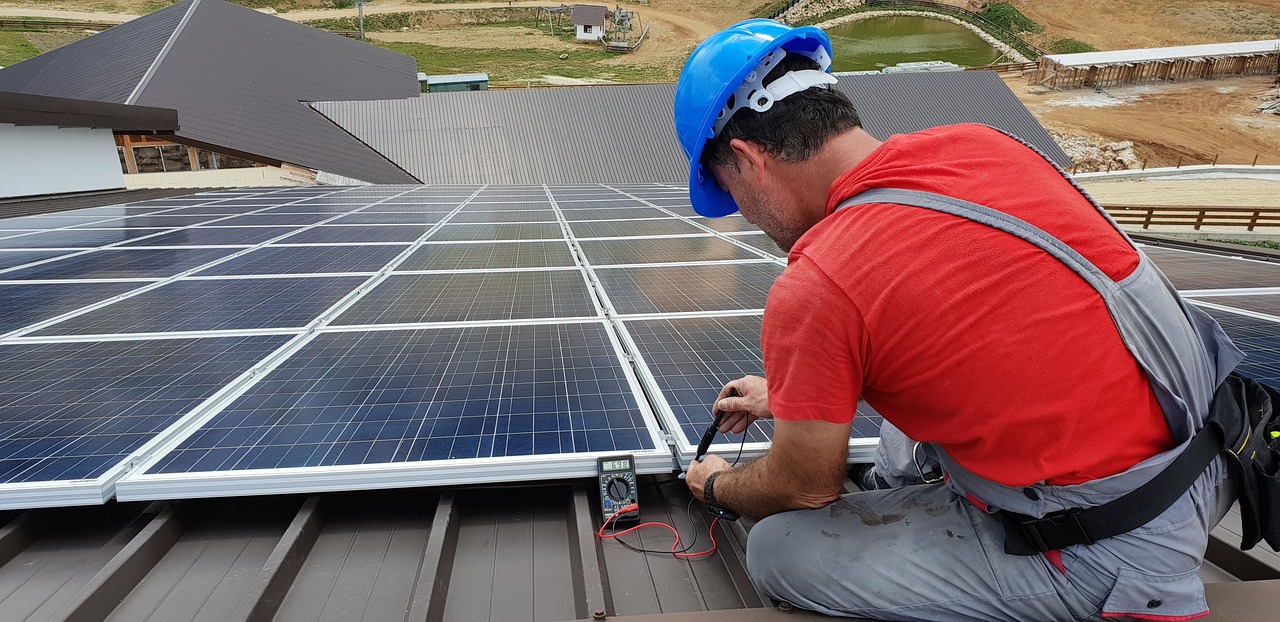
Cooling Techniques
When it comes to maximizing the efficiency of solar panels, managing heat is not just a good idea; it's essential. As the sun beats down, solar panels can heat up, and this increase in temperature can lead to a decrease in energy output. In fact, for every degree Celsius that the temperature rises above 25°C (77°F), the efficiency of solar panels can drop by about 0.5%. This is where effective cooling techniques come into play, helping to ensure that your solar panels are operating at their best.
There are several innovative methods to keep solar panels cool, each with its own benefits and applications. Let's dive into some of these techniques:
- Passive Cooling: This technique involves designing the solar panel system to take advantage of natural airflow and heat dissipation. For instance, elevating solar panels off the roof surface allows air to circulate underneath, reducing heat buildup. This method is cost-effective and requires no additional energy input.
- Active Cooling Systems: These systems use mechanical means to cool solar panels, such as fans or liquid cooling. While they can be more expensive to install and operate, they can significantly enhance energy output, especially in regions with high temperatures.
- Reflective Coatings: Some new materials and coatings can reflect sunlight away from the panels, helping to keep them cooler. These coatings can be applied to the surface of the panels, reducing heat absorption and improving efficiency.
Implementing these cooling techniques can lead to substantial benefits. For example, a study showed that solar panels equipped with active cooling systems could produce up to 20% more energy compared to those without any cooling measures. This is particularly advantageous in hot climates where the sun's intensity can be relentless.
Moreover, as technology advances, we are seeing more innovative solutions emerging. Researchers are exploring the use of phase change materials (PCMs) that absorb heat and release it slowly, thus keeping the panels at a more stable temperature. This not only enhances efficiency but also extends the lifespan of the solar panels, making it a win-win situation for both energy production and sustainability.
In conclusion, understanding and implementing effective cooling techniques is crucial for optimizing solar panel performance. As we continue to harness the power of the sun, these innovations will play a vital role in ensuring that we make the most of this renewable energy source.
Q1: How does temperature affect solar panel efficiency?
A1: Higher temperatures can reduce the efficiency of solar panels. For every degree Celsius above 25°C, the energy output may decrease by approximately 0.5%. Keeping panels cool is essential for optimal performance.
Q2: What are passive cooling techniques?
A2: Passive cooling techniques involve designing solar panel systems to utilize natural airflow and heat dissipation, such as elevating panels to allow air circulation underneath, which helps to reduce heat buildup.
Q3: Are active cooling systems worth the investment?
A3: While active cooling systems can be more expensive, they can significantly enhance energy output, especially in hotter climates, making them a worthwhile investment for many solar panel users.
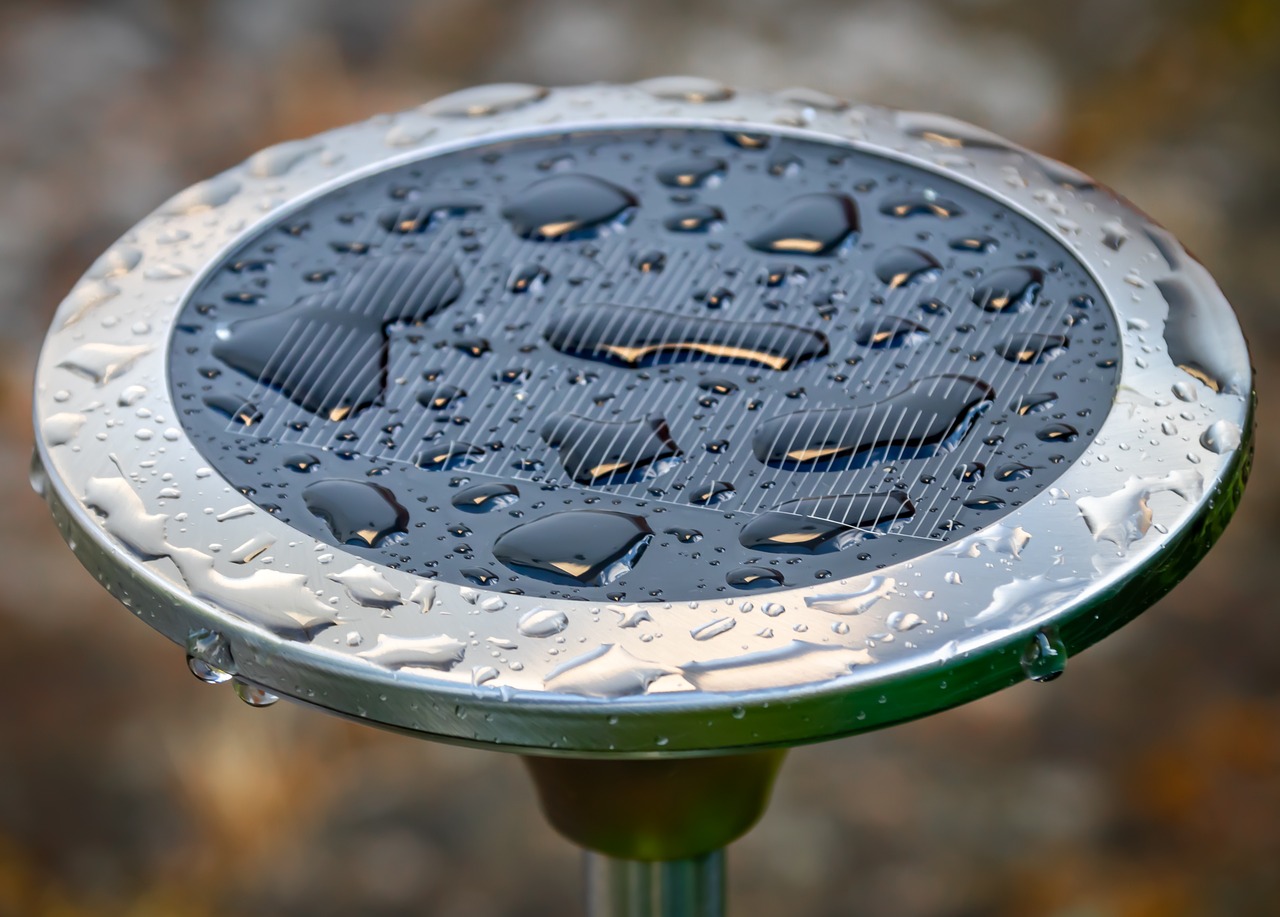
Material Innovations
The world of solar energy is constantly evolving, and one of the most exciting aspects of this evolution is the innovative materials being developed for solar panels. Traditional solar panels, typically made from silicon, have been the industry standard for decades. However, recent advancements in material science are paving the way for more efficient, cost-effective, and versatile solar solutions. Imagine a solar panel that not only captures sunlight but also adapts to its environment. Sounds futuristic, right? Well, it's happening now!
One of the most promising innovations is the development of perovskite solar cells. These cells are made from a unique crystal structure that allows for exceptional light absorption and energy conversion. In laboratory settings, perovskite cells have achieved efficiencies exceeding 25%, which is a significant leap compared to traditional silicon cells. What's even more impressive is their potential for low-cost production, making solar energy more accessible to a broader audience. Imagine a world where solar panels are not just a luxury but a common feature on rooftops across the globe!
Another fascinating material making waves in solar technology is organic photovoltaics (OPVs). These panels utilize organic compounds to convert sunlight into electricity. They are lightweight, flexible, and can be produced using less energy than traditional panels. This flexibility opens up new possibilities for integration into various surfaces, from building facades to clothing. Think about it: solar panels that can be seamlessly integrated into your shirt or your car's roof. The potential for widespread adoption is enormous!
Moreover, advancements in nanotechnology are also enhancing solar panel efficiency. By manipulating materials at the nanoscale, researchers are creating coatings that improve light absorption and reduce reflection. These coatings can significantly boost the performance of solar panels, especially in less-than-ideal weather conditions. Imagine a rainy day where your solar panels are still generating energy effectively—now that’s a game-changer!
To highlight the impact of these material innovations, let’s take a look at a comparison table that summarizes the efficiency levels and characteristics of different solar panel materials:
| Material Type | Efficiency (%) | Cost-Effectiveness | Flexibility |
|---|---|---|---|
| Monocrystalline Silicon | 15-22 | High | Low |
| Polycrystalline Silicon | 13-16 | Moderate | Low |
| Thin-Film | 10-12 | Low | High |
| Perovskite | 20-25+ | Potentially Low | Moderate |
| Organic Photovoltaics | 10-15 | Potentially Low | Very High |
As we continue to innovate and improve solar technologies, the future looks bright for solar energy. With each new material developed, we move closer to a world where clean, renewable energy is not just a dream but a reality. The integration of these advanced materials will not only enhance the efficiency of solar panels but also reduce the cost of solar energy systems overall. So, whether you’re a homeowner looking to reduce your energy bills or a business aiming to lower your carbon footprint, the innovations in solar panel materials offer exciting opportunities for everyone.

Shading and Orientation
The positioning of solar panels is not just a matter of aesthetics; it plays a crucial role in determining their efficiency and energy output. Imagine trying to catch sunlight while standing under a tree; that’s what shading does to solar panels. When panels are obstructed by nearby buildings, trees, or other structures, their ability to harness solar energy diminishes significantly. This phenomenon is particularly evident during certain times of the day when the sun is lower in the sky, casting longer shadows. Therefore, it is essential to consider the surroundings before installation to maximize exposure to sunlight.
Moreover, the angle at which solar panels are installed can greatly influence their performance. Ideally, solar panels should be positioned at an angle that allows them to capture the most sunlight throughout the day. This optimal angle varies depending on the geographic location and the season. For instance, in areas closer to the equator, panels may need to be tilted at a different angle compared to those situated in northern or southern latitudes. The table below summarizes the recommended tilt angles for different latitudes:
| Latitude Range | Recommended Tilt Angle |
|---|---|
| 0° - 10° | 0° - 10° |
| 10° - 30° | 10° - 20° |
| 30° - 50° | 20° - 30° |
| 50° - 70° | 30° - 50° |
In addition to tilt angles, the orientation of solar panels—whether they face south, east, or west—also significantly affects energy production. In the northern hemisphere, south-facing panels generally receive the most sunlight over the course of the day, making them the most efficient choice. However, depending on individual energy needs, east or west orientations might be suitable as well. For example, east-facing panels can capture sunlight in the morning, which can be beneficial for households that consume more energy during the day.
To wrap it up, understanding the impacts of shading and orientation is vital for anyone considering solar energy solutions. By carefully planning the installation site and angle of the panels, homeowners and businesses alike can significantly enhance their energy production. After all, in the world of solar energy, every ray counts!
- What is the best orientation for solar panels? The optimal orientation for solar panels in the northern hemisphere is south-facing, while in the southern hemisphere, panels should face north.
- How does shading affect solar panel efficiency? Shading can drastically reduce the amount of sunlight reaching the panels, leading to lower energy production.
- Can I install solar panels on a shaded roof? Yes, but it’s important to evaluate the extent of shading and consider potential energy losses. In some cases, additional measures like microinverters may be necessary.

Real-World Applications of Solar Panels
Solar panels have revolutionized the way we harness energy, transforming sunlight into a reliable power source that can be utilized in various sectors. From residential homes to sprawling industrial complexes, the versatility of solar technology is nothing short of remarkable. Imagine waking up in a house powered by the sun, where your electricity bill shrinks and your carbon footprint diminishes. This isn’t just a dream; it’s a reality for many homeowners today. The shift towards solar energy is not just about saving money; it's about embracing a sustainable future.
In residential settings, solar panels provide homeowners with an opportunity to generate their own electricity, leading to increased energy independence. Many governments offer financial incentives, such as tax credits and rebates, to encourage the adoption of solar technology. These incentives can significantly reduce the initial installation costs, making solar energy more accessible. Additionally, homeowners can enjoy the long-term benefits of reduced utility bills. For instance, a typical solar panel installation can pay for itself within a few years, after which the energy generated is essentially free!
On the commercial front, businesses are increasingly recognizing the financial and environmental benefits of solar energy. Companies that invest in solar technology often see a dramatic decrease in operational costs. For example, a commercial facility with a large rooftop area can install solar panels to offset a substantial portion of its electricity needs. This not only saves money but also enhances the company's reputation as a sustainable business, appealing to environmentally conscious consumers.
To illustrate the impact of solar energy in the commercial sector, consider the following table showcasing some notable case studies:
| Company | Location | Solar Installation Size (kW) | Annual Savings ($) |
|---|---|---|---|
| Walmart | California | 2000 | $1,500,000 |
| Mountain View, CA | 1,600 | $500,000 | |
| Target | New York | 1,000 | $300,000 |
These examples highlight how businesses can leverage solar technology not just for cost savings, but also to contribute to a cleaner environment. By reducing reliance on fossil fuels, companies can lower their greenhouse gas emissions, thus playing a part in combating climate change. Furthermore, many organizations are adopting solar energy as part of their corporate social responsibility initiatives, showcasing their commitment to sustainability.
In the industrial sector, solar panels are being utilized in manufacturing facilities, warehouses, and distribution centers. The scale of these installations can be immense, often spanning acres of rooftops or land. Industries such as agriculture are also tapping into solar energy, using it to power operations and even irrigation systems. This not only improves efficiency but also helps farmers reduce their dependence on traditional energy sources.
As solar technology continues to advance, the potential applications are expanding. Innovations in battery storage are enabling solar energy to be stored for use during non-sunny periods, making it a more reliable energy source. This means that homes and businesses can draw on solar energy even when the sun isn’t shining, further enhancing energy independence.
In conclusion, the real-world applications of solar panels are vast and varied. From residential homes enjoying lower energy bills to businesses enhancing their sustainability efforts, solar technology is paving the way for a greener future. As we continue to embrace this renewable energy source, we are not only investing in our own savings but also in the health of our planet.
- What are the main benefits of installing solar panels? Solar panels reduce electricity bills, increase energy independence, and contribute to environmental sustainability.
- How much can I save with solar panels? Savings vary based on location, energy usage, and local incentives, but many homeowners see significant reductions in their utility bills.
- Do solar panels work in cloudy weather? Yes, solar panels can still generate electricity on cloudy days, though their efficiency may be reduced compared to sunny conditions.
- What is the lifespan of solar panels? Most solar panels come with a warranty of 25 years, but they can last much longer with proper maintenance.
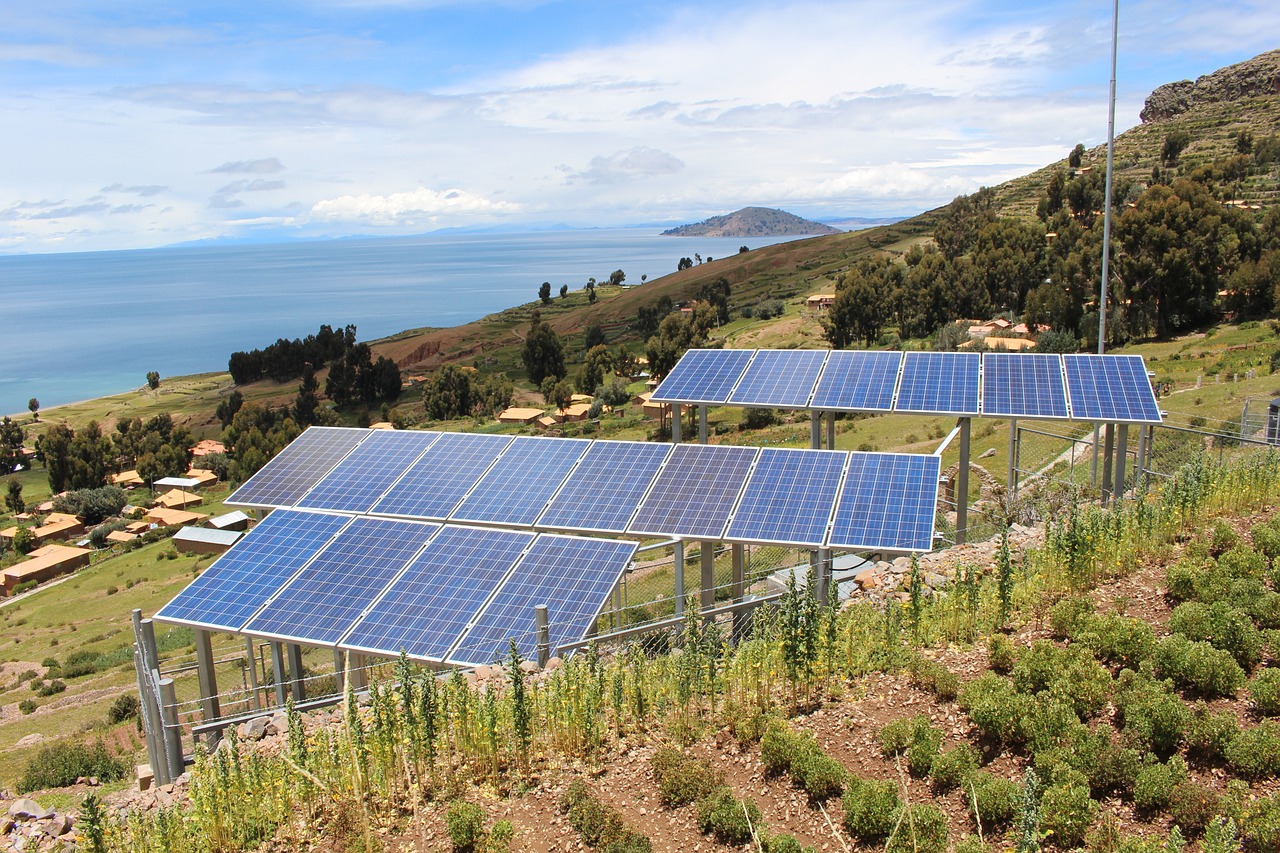
Residential Solar Solutions
When it comes to embracing sustainability, shine brightly as a beacon of hope for homeowners looking to cut down on energy costs and reduce their carbon footprint. Imagine waking up every morning knowing that the energy powering your home is derived from the sun—an infinite source of energy that's not only clean but also increasingly affordable. With advancements in technology and a growing number of financial incentives, going solar has never been more accessible or beneficial.
Homeowners are discovering that installing solar panels can lead to significant savings on their electricity bills. In fact, many states offer tax credits and rebates that can cover a substantial portion of the installation costs. This means that the initial investment in solar energy can pay off quickly, sometimes within just a few years. Additionally, as energy prices continue to rise, the savings from solar energy become even more pronounced, making it a wise financial decision.
But the benefits of residential solar solutions extend beyond just financial savings. By harnessing solar energy, homeowners contribute to a healthier planet. Each solar panel installed reduces reliance on fossil fuels, which are a major contributor to climate change. It’s like planting a tree that will keep giving back for years to come. When you think about it, every kilowatt-hour produced by your solar panels is a step towards a more sustainable future.
Moreover, with the rise of smart home technology, integrating solar solutions into your home has become even easier. Many solar systems now come with monitoring apps that allow homeowners to track their energy production and consumption in real-time. This data not only helps in maximizing energy efficiency but also empowers homeowners to make informed decisions about their energy usage. Imagine being able to adjust your energy consumption based on the sunlight available—it's like having a personal energy assistant!
To further illustrate the impact of residential solar solutions, consider the following table that summarizes the key benefits:
| Benefit | Description |
|---|---|
| Cost Savings | Reduction in electricity bills and potential tax incentives. |
| Environmental Impact | Lower carbon footprint and contribution to a sustainable future. |
| Energy Independence | Less reliance on the grid and protection against rising energy costs. |
| Increased Home Value | Solar installations can enhance property value and appeal. |
In conclusion, residential solar solutions offer a multitude of benefits that extend beyond mere financial savings. They empower homeowners to take control of their energy consumption, contribute to environmental sustainability, and enjoy the peace of mind that comes with energy independence. So, if you’re on the fence about making the switch to solar, consider this: every day that you wait is a day that you miss out on harnessing the power of the sun. Why not take the leap and start your solar journey today?
- How much do residential solar panels cost? The cost can vary based on the size of the system and local incentives, but many homeowners find that the long-term savings outweigh the initial investment.
- Will solar panels work on cloudy days? Yes, solar panels can still generate electricity on cloudy days, although their efficiency may be reduced.
- How long do solar panels last? Most solar panels come with a warranty of 25 years, but they can last much longer with proper maintenance.
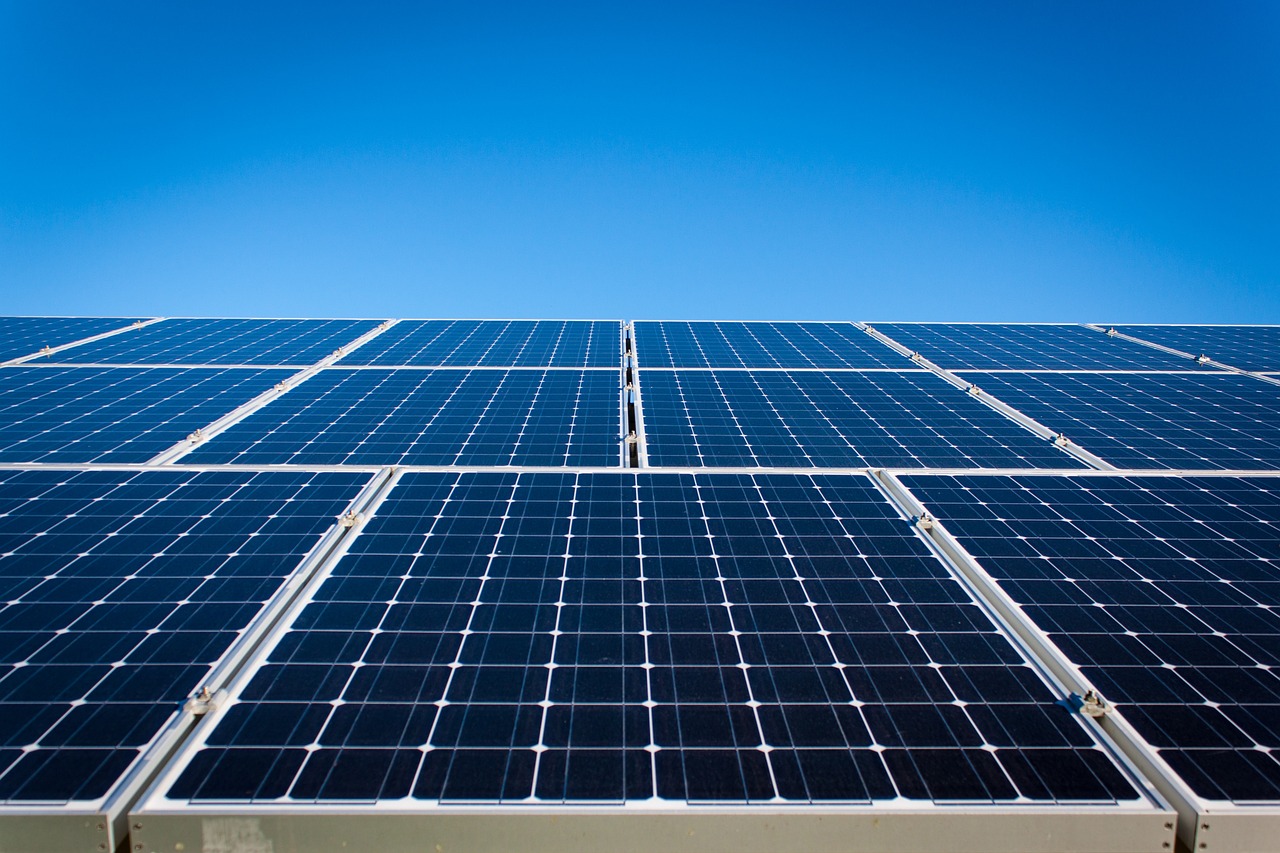
Commercial and Industrial Use
As the world increasingly shifts towards sustainable energy solutions, businesses are recognizing the potential of solar panels not just as a trend, but as a strategic investment. Companies across various sectors are embracing solar technology to not only cut down on operational costs but also to enhance their corporate social responsibility initiatives. Imagine a factory that once relied heavily on fossil fuels now harnessing the power of the sun, significantly reducing its carbon footprint while saving thousands of dollars on energy bills. It's a win-win situation!
One of the primary reasons for this shift is the financial incentive. Many governments offer tax breaks, rebates, and grants to businesses that invest in solar energy systems. Over time, the initial investment in solar panels can be recouped through these savings, leading to a remarkable return on investment (ROI). For instance, a medium-sized manufacturing plant can save upwards of $100,000 annually on energy costs depending on its location and energy consumption. This financial relief allows businesses to allocate funds to other critical areas, such as research and development or employee benefits.
Furthermore, companies that adopt solar energy solutions often report improved public perception. In a world where consumers are becoming increasingly eco-conscious, showcasing a commitment to renewable energy can enhance a brand's reputation. Customers are more likely to support businesses that prioritize sustainability, which can lead to increased sales and customer loyalty. For example, a retail chain that powers its stores with solar energy can market itself as a green brand, attracting environmentally aware consumers.
To illustrate the impact of solar panels in commercial settings, consider the following table that highlights a few successful case studies:
| Company | Industry | Annual Savings | Carbon Emissions Reduction |
|---|---|---|---|
| ABC Manufacturing | Manufacturing | $150,000 | 500 tons |
| XYZ Retail | Retail | $80,000 | 300 tons |
| GreenTech Solutions | Technology | $200,000 | 700 tons |
In addition to financial benefits, solar panels can also provide energy independence. Businesses that install solar systems can generate their own electricity, reducing reliance on the grid and protecting themselves from fluctuating energy prices. This stability is crucial for industries where energy costs can significantly impact profit margins. Moreover, with advancements in battery storage technology, companies can store excess energy generated during the day for use at night or during peak demand times, further enhancing their energy resilience.
However, it's essential to acknowledge that the transition to solar energy is not without its challenges. Initial installation costs can be high, and not every business has the roof space or suitable location to install solar panels effectively. Additionally, companies must navigate local regulations and potential zoning issues. Yet, with proper planning and consultation with solar energy experts, these hurdles can often be overcome.
In conclusion, the commercial and industrial use of solar panels is more than just a trend; it's a necessary evolution in how businesses approach energy consumption. By investing in solar technology, companies can achieve significant cost savings, enhance their brand image, and contribute to a more sustainable future. As solar technology continues to advance and become more accessible, we can expect to see even more businesses making the switch to solar energy.
- What are the initial costs of installing solar panels for commercial use? The costs can vary widely based on the size of the installation, but many businesses can expect to invest anywhere from $15,000 to $100,000 or more.
- How long does it take to see a return on investment? Typically, businesses can see a return on their investment within 5 to 7 years, depending on energy usage and local incentives.
- Can solar panels work in cloudy or rainy weather? Yes, solar panels can still generate electricity on cloudy days, although their efficiency may be reduced.
- Are there maintenance costs associated with solar panels? Solar panels require minimal maintenance, but periodic cleaning and inspections are recommended to ensure optimal performance.
Frequently Asked Questions
- What are the different types of solar panels?
There are primarily three types of solar panels: monocrystalline, polycrystalline, and thin-film. Monocrystalline panels are known for their high efficiency and sleek appearance, while polycrystalline panels are slightly less efficient but often more affordable. Thin-film panels are lightweight and flexible, making them suitable for specific applications, but they generally have lower efficiency compared to the other two types.
- How does temperature affect solar panel efficiency?
Temperature plays a significant role in the performance of solar panels. As the temperature rises, the efficiency of the panels can decrease. This is because excessive heat can cause the semiconductor materials in the panels to lose their effectiveness in converting sunlight into electricity. Therefore, managing temperature is crucial for maintaining optimal energy output.
- What cooling techniques can enhance solar panel efficiency?
To combat the negative effects of heat, various cooling techniques can be implemented. Passive cooling methods, such as proper ventilation and shading, help maintain lower temperatures naturally. On the other hand, active cooling systems involve mechanical solutions, like fans or water cooling, to actively reduce panel temperatures, thus improving energy production.
- How does shading impact solar panel performance?
Shading can dramatically reduce the energy output of solar panels. Even a small amount of shade from trees, buildings, or other objects can cause a significant drop in performance. It's essential to install solar panels in locations where they can receive maximum sunlight throughout the day, avoiding any potential shading obstacles.
- What are the benefits of installing solar panels in residential settings?
Homeowners can enjoy numerous benefits from installing solar panels, including financial incentives like tax credits and rebates, energy independence by generating their own electricity, and contributing to a healthier environment by reducing carbon footprints. Additionally, solar panels can lead to significant cost savings on energy bills over time.
- How are businesses leveraging solar technology?
Businesses are increasingly adopting solar technology to cut down on operational costs and minimize their environmental impact. By installing solar panels, companies can significantly reduce their electricity expenses and showcase their commitment to sustainability, which can enhance their brand image and appeal to environmentally conscious consumers.



















